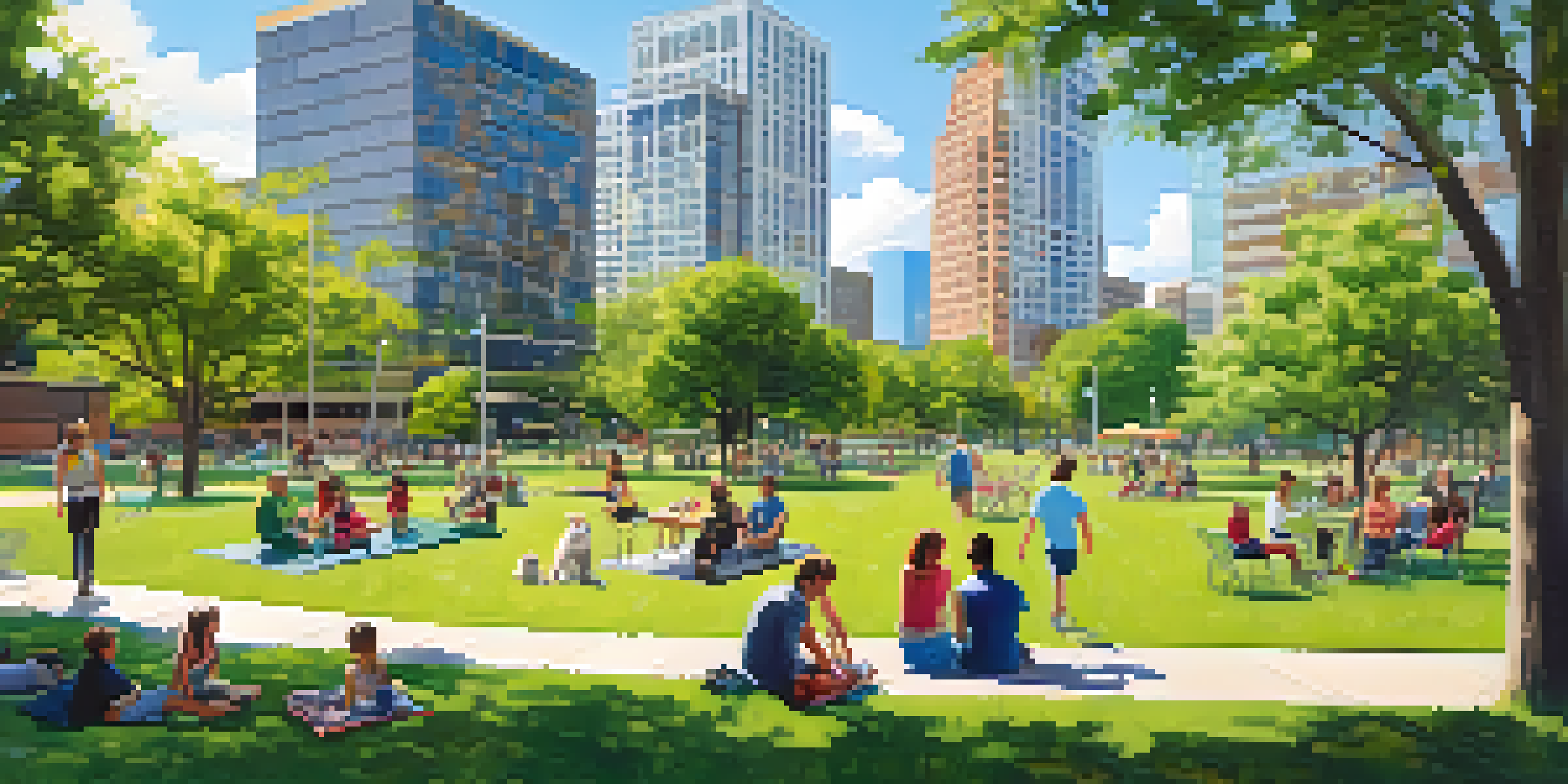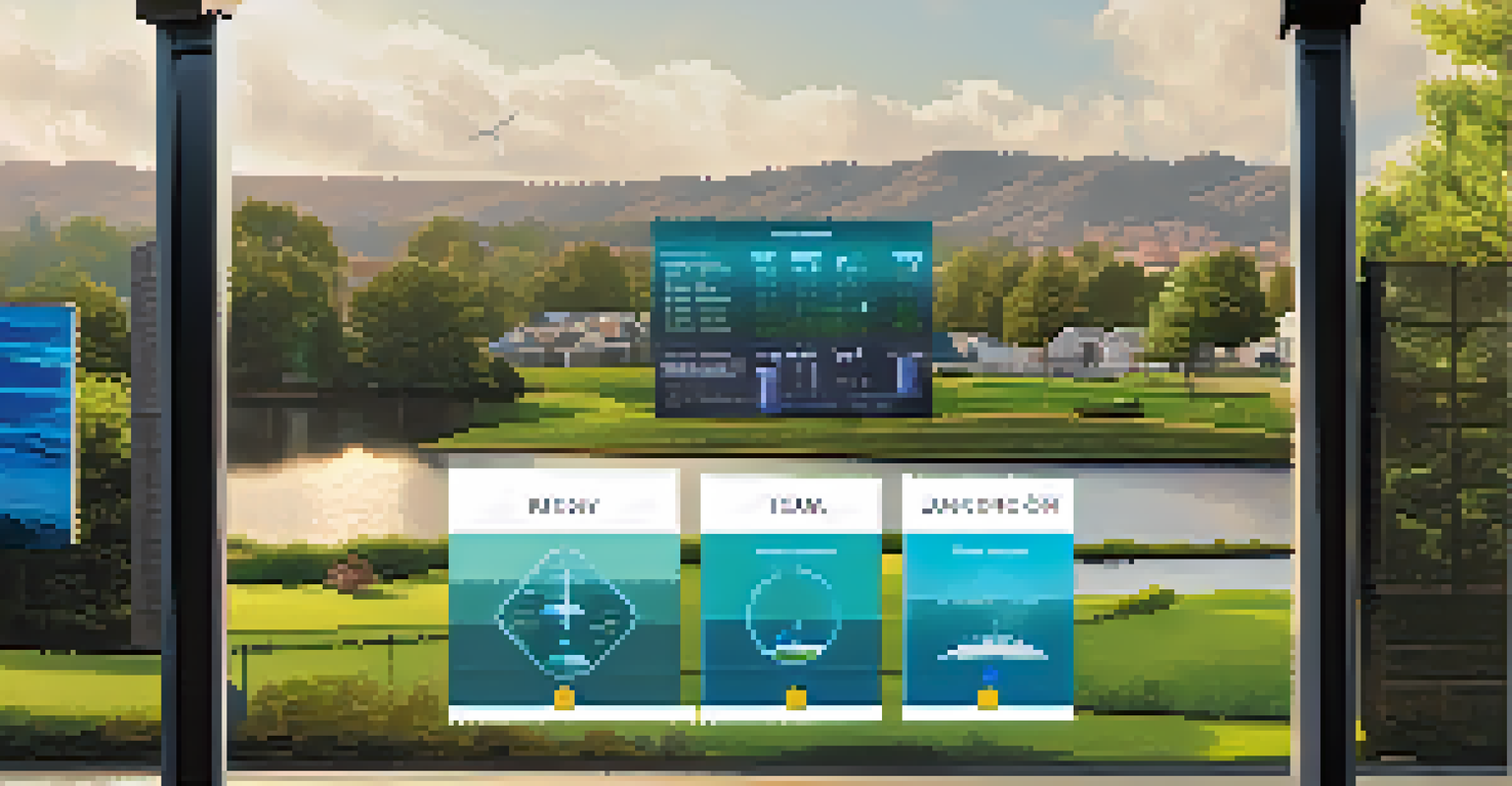Urban Resilience: Preparing Austin for Future Challenges

Understanding Urban Resilience and Its Importance
Urban resilience refers to a city's ability to anticipate, prepare for, and respond to various challenges, such as climate change, economic shifts, and social inequalities. It's about creating systems that can withstand shocks and stresses while continuing to function effectively. For Austin, a city known for its rapid growth and vibrant culture, building resilience is essential to maintaining its community's quality of life.
Cities are the future of our planet. If we don't build resilience into our urban environments, we risk failing future generations.
As we look around the world, cities like New Orleans and New York have faced significant challenges that tested their resilience. These cities learned that proactive measures, like improving infrastructure and fostering community engagement, are vital in mitigating risks. Austin can draw valuable lessons from these experiences to better equip itself for future uncertainties.
Ultimately, investing in urban resilience means not only protecting the environment but also enhancing the economy and ensuring social equity. By prioritizing resilience, Austin can become a model for other cities, showcasing how thoughtful planning and community involvement can lead to a more sustainable future.
Assessing Current Vulnerabilities in Austin
To effectively prepare for future challenges, it’s crucial to first identify what vulnerabilities exist in Austin. From flooding due to heavy rainfall to the impacts of extreme heat, these issues can disrupt daily life and strain resources. Additionally, social disparities can exacerbate these vulnerabilities, leaving some communities more susceptible than others.

A comprehensive vulnerability assessment can help pinpoint areas that require immediate attention. For instance, neighborhoods situated near the river may face higher flood risks, while those with limited access to healthcare may struggle more during public health emergencies. By understanding these factors, city planners can prioritize resources and interventions where they are needed most.
Urban Resilience: A City Essential
Building urban resilience is crucial for cities like Austin to effectively respond to challenges such as climate change and social inequalities.
Engaging the community in these assessments is equally important. Local input can provide insights that data alone might miss, ensuring that all voices are heard. This collaborative approach fosters a sense of ownership and responsibility among residents, making them crucial partners in building a resilient Austin.
Climate Change: A Major Challenge Ahead
Climate change presents one of the most pressing challenges for urban areas. In Austin, rising temperatures, increased rainfall, and the potential for severe weather events necessitate a robust response. As temperatures soar, the risk of heat-related illnesses and energy shortages rises, impacting vulnerable populations the most.
The greatest challenge of the twenty-first century is not climate change but how to make cities resilient to it.
To combat these effects, Austin must implement strategies that focus on green infrastructure and sustainable practices. For example, expanding urban green spaces can help reduce the urban heat island effect, making neighborhoods cooler and more livable. Additionally, investing in renewable energy sources not only mitigates climate change but also promotes energy independence.
By prioritizing climate resilience, Austin can safeguard its environment while enhancing its quality of life. This approach ensures that the city remains a vibrant and appealing place for residents and visitors alike, regardless of the challenges posed by a changing climate.
Strengthening Infrastructure for Greater Resilience
Infrastructure is the backbone of any city, and for Austin, strengthening it is key to enhancing urban resilience. Aging roads, bridges, and public transportation systems can hinder a city's ability to respond to emergencies and adapt to changing conditions. Upgrading these systems is not just about maintaining functionality but also about future-proofing the city.
Investing in smart infrastructure, such as sensor-equipped roads that monitor traffic and weather conditions, can provide real-time data to improve responses during crises. Additionally, integrating sustainable practices, like permeable pavements that reduce flooding, can enhance infrastructure's resilience to climate impacts. Austin has the opportunity to innovate and lead the way in modern infrastructure development.
Community Engagement Drives Resilience
Involving residents in decision-making fosters a sense of ownership and helps tailor resilience strategies to meet the unique needs of diverse neighborhoods.
Furthermore, collaboration between public and private sectors can drive these initiatives forward. By pooling resources and expertise, Austin can build a resilient infrastructure system that serves all its residents while also being adaptable to future challenges.
Community Engagement: A Pillar of Resilience
Community engagement is vital in building a resilient urban environment. When residents actively participate in decision-making processes, it fosters a sense of belonging and responsibility toward their neighborhoods. For Austin, this means involving citizens in resilience planning, ensuring their voices shape the city's future.
Local workshops and forums can be platforms for residents to share their concerns and ideas. This grassroots approach not only empowers individuals but also helps identify unique solutions tailored to specific community needs. By listening to the community, Austin can develop strategies that reflect its diverse population and enhance collective resilience.
Moreover, building strong community networks can be a safety net during emergencies. When neighbors know and trust each other, they are more likely to come together in times of crisis. By prioritizing community engagement, Austin can create a unified front against future challenges, ensuring that resilience is woven into the city’s fabric.
Innovative Solutions for Urban Resilience
Innovation is at the heart of building urban resilience. In Austin, embracing new technologies and creative solutions can provide the tools needed to face future challenges head-on. From smart city initiatives to green building practices, innovation can transform how the city operates and responds to stressors.
For instance, implementing smart water management systems can help optimize water usage, especially during droughts. These systems can monitor water levels and usage patterns, allowing the city to respond proactively to shortages. Similarly, utilizing data analytics can enhance emergency response times and resource allocation during crises.
Innovative Infrastructure Solutions
Investing in smart and sustainable infrastructure is key to enhancing Austin's ability to withstand future challenges and improve overall quality of life.
By fostering a culture of innovation, Austin can attract talent and investment, positioning itself as a leader in urban resilience. This not only benefits the city economically but also ensures that it remains adaptable in the face of evolving challenges, keeping the community safe and thriving.
Policy Frameworks Supporting Urban Resilience
A strong policy framework is essential for guiding a city’s resilience efforts. In Austin, local government policies can play a crucial role in shaping how the city prepares for and responds to various challenges. By creating clear guidelines and objectives, authorities can ensure that resilience is prioritized in all aspects of urban planning.
Policies that promote sustainable development, equitable resource distribution, and emergency preparedness are critical for fostering resilience. For example, zoning laws can encourage the development of green spaces, while investment in public transit can reduce reliance on personal vehicles, decreasing carbon emissions. These integrated policies can create a holistic approach to urban resilience.

Moreover, ongoing evaluation and adaptation of these policies are necessary. As challenges evolve, so must the strategies to combat them. By establishing a dynamic policy framework, Austin can remain flexible and responsive, ensuring that it is always prepared for whatever the future may hold.